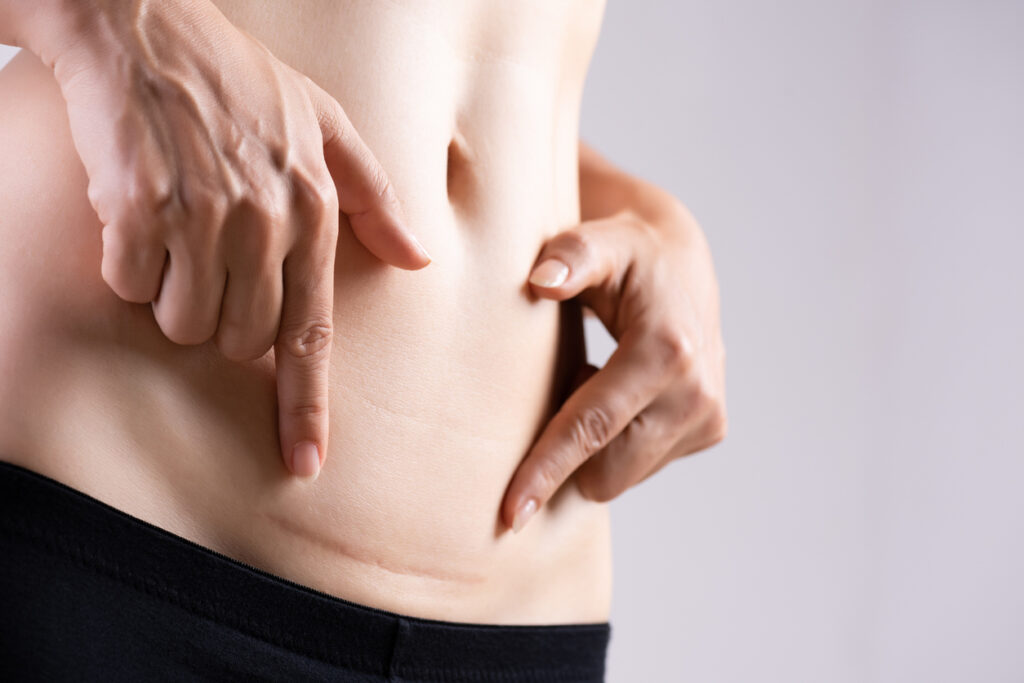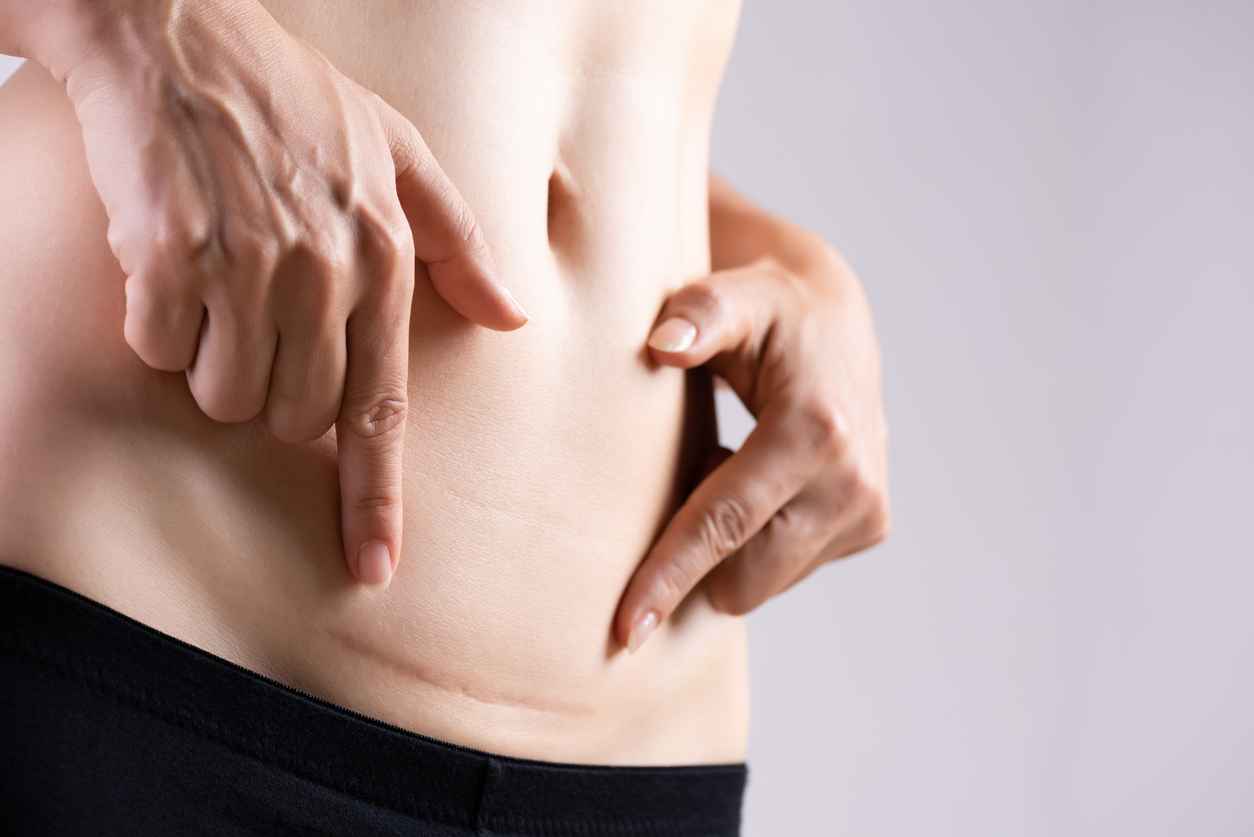
Tips For Scar Management and Desensitization After C-Section
Also After Hysterectomy and Other Laparoscopic Procedures
After delivery via cesarean section, hysterectomy or other laparoscopic procedure, there will be an incision site that you will have to manage according to the directions of your doctors and nurses to keep the site from becoming infected. Although the incision site will close after about 2-3 weeks, scar tissue will continue to form. It is important to begin scar massage and desensitization techniques to help prevent scar tissue build up, puckering, and ongoing pain.
Managing Scar Tissue
A trained physical therapist can perform soft tissue mobilization and other modalities such as cold laser over the scar site. As a part of your treatment, your therapist will teach you skills to manage the scars at home for the following benefits:
- Prevent scar tissue build up and puckering of scar site
- Soften and flatten scar tissue by promoting collagen remodeling
- Decrease itching
- Provide moisture and flexibility to the scar
- Desensitize the scar tissue, reducing pain
Moisturize
Apply lotion to the scar regularly to keep the scar moisturized. You will also use lotion for the scar massage techniques outlined below.
- Use unscented lotion, do not use heavily perfumed lotions
- Do not use lotions with artificial dyes or colors
- Do not use any lotion containing vitamin E for the first month following your surgery or injury. You may use vitamin E containing lotions after the first month.
- Avoid paraben, glycerine, and lanolin
The following is a list of some examples:
- Eucerin®
- Cetaphil®
- Organic coconut oil
Scar Massage
Once the incision site is closed (usually around 2-3 weeks), you can begin scare tissue massage. Wait until your healthcare provider has removed any sutures/staples (if used) and all scabs have fallen off by themselves. Do not pick at or pull scabs off.
Directions:
- Apply lotion to fingerpads and scar site.
- Use the pads or soft tips of your fingers to massage the scar and tissue around the scar.
- Massage in three directions:
- Circles: Using two fingers make small circles over the length of the scar and the skin surrounding it.
- Vertical: Using two fingers massage the scar up-and-down, like an “inchworm”
- Horizontal: Using two fingers massage the scar from side-to-side, across the grain of the scar.
Pressure
Apply as much pressure as you can tolerate. Begin with light pressure. As you desensitize the scar, apply deeper and firmer pressure. Applying enough pressure to make the scar area lighten in color or turn white.
How Often?
Massage the scar 2-3x daily, for no more than 2 minutes per inch of scar.
You should massage your scars for at least six months following your surgery or injury. Your body will continue to lay down collagen and scar tissue at the site for the rest of your life, with the most tissue formation happening within the first 3-12 months.
Your goal is to make your scar tissue slide just like the skin around it, in all directions. This will result in a pain free scar without restriction.
Contact your doctor if you experience:
- Redness
- Bleeding
- Scar is pussy, yellow, or weeping
- Scar feels warmer than the skin around it
- More pain than usual at the site of the scar
Sun Exposure
Avoid sun exposure on the scar site for one year. Sun exposure may cause your scars to become pigmented and turn darker than the surrounding skin. Use sun block or cover with clothing.
See a Therapist
If you have any questions, schedule an appointment with a trained physical therapist to help your incision heal fully.
Resources
Moffitt Cancer Center. (2006). Managing your scar. https://moffitt.org/

